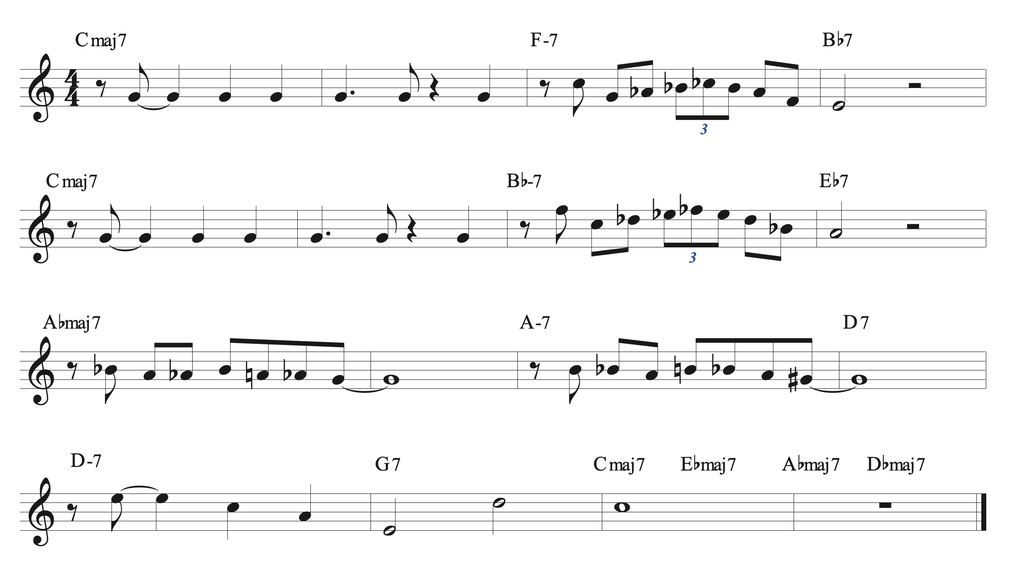What is a Lead Sheet?
One of the primary ways that combo jazz and popular music differ from classical and orchestral music is that in most jazz and pop, the majority of the performers, including the bass, guitar, piano, drums, and melody instruments are improvising their parts. This is a very different way of approaching complex music as it requires the performers to interpret the harmonic information according to the style and aesthetic in which they are playing.
This is one of the hallmarks of jazz and exists in many other musical traditions as well. In the jazz tradition it is quite common for music to not be written down at all, but instead taught aurally, that is, by ear. When typical small group jazz tunes are written down, they often use what is called “lead sheet” notation.
Below is a handwritten lead sheet for Tadd Dameron’s tune “Lady Bird” possibly written by John Coltrane. Note the use of the (∆) symbol for major 7th type chords. This notational practice is often attributed to John Coltrane via Yusef Lateef. Source

A lead sheet contains the notes and rhythms of the melody as well as the chord symbols which dictate the underlying harmonic structure of the tune. The chord changes are assumed to occur on either the first beat of their assigned bars, or beats 1 and 3 of their assigned bars when there are two chords per bar (as seen in the final bars of the above lead sheet).
A more modern (and detailed) version of the above lead sheet is presented below with changes to the melody.

Each instrument will use the information on the lead sheet in conjunction with their ears and prior experience, to create their part spontaneously, in the moment. The notes, rhythms, articulations, and dynamics, are informed by the song, the genre, and the other players’ parts:
While Jazz Night School recommends learning music by ear as the primary pedagogical method, lead sheets can be an important part of learning jazz and playing with others. Through mastering the language of chord symbols, and gaining experience reading a large number of lead sheets, you develop the ability to read through a tune and improvise a part very quickly.
“...You should know the changes thoroughly, and in knowing the changes, then, it gives you a lot of freedom… and, by knowing what the change is, you’ll hear things.” - Clifford Brown

